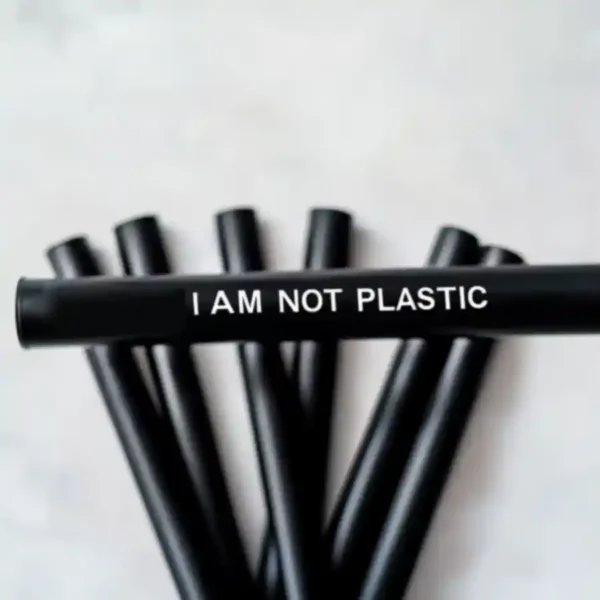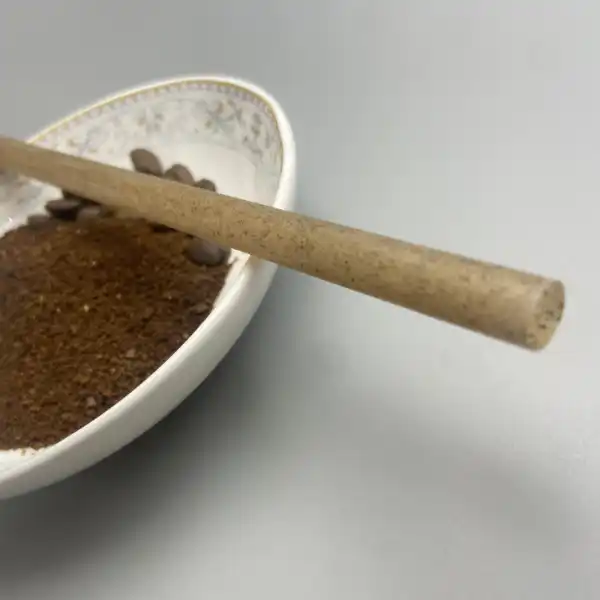
Transitioning to eco-friendly straws and drinkware is a vital step for businesses that want to reduce their environmental impact and appeal to the growing number of environmentally conscious consumers. This comprehensive guide will provide businesses with actionable steps to make the switch smoothly and effectively.
Selecting Eco-Friendly Straw Alternatives
The first step in transitioning to sustainable alternatives is selecting the right eco-friendly straws. Here are some popular options, each with distinct benefits:
1. Бумажные трубочки
Paper straws are one of the most common eco-friendly alternatives to plastic. Made from FSC-certified fiber, they are compostable and widely available, making them an easy choice for businesses looking to reduce their plastic usage. Paper straws are ideal for beverages that require a single-use straw, such as juices or soft drinks [5].
2. Plant-Based Straws
Plant-based straws come in several varieties, all offering biodegradable and compostable benefits:
- Rice Straws: Made from rice and tapioca starch, these are biodegradable and even edible, providing a unique option for customers who prioritize zero-waste practices [2].
- Пшеничная соломка: These straws are made from wheat stems, offering a natural, biodegradable alternative. They are single-use but break down easily in composting environments [1].
- Бамбуковая соломка: Known for their durability and antibacterial properties, bamboo straws are reusable and compostable, making them an excellent long-term solution [1].
- Hay Straws: Made from natural wheat stems, hay straws are gluten-free and 100% compostable, offering a versatile and sustainable option for businesses [7].

3. Coconut Straws
Coconut straws are made from fermented coconut water and offer the benefit of being biodegradable. These straws can be reused throughout the day, making them an eco-friendly and durable alternative to plastic [2].
4. Sulapac Straws
Sulapac straws are made from wood chips and plant-based binders. They biodegrade without leaving harmful microplastics, making them an excellent choice for businesses seeking a truly eco-friendly solution [3].
5. Metal Straws
Stainless steel metal straws are highly durable and reusable, making them an excellent investment for businesses. They provide a sustainable, long-term solution to single-use plastic straws and can be customized with branding for added appeal [6].
6. Glass Straws
Glass straws are another reusable option. They are easy to clean, visually appealing, and offer a high-end alternative for businesses in the food and beverage industry. These straws are durable, but care must be taken to prevent breakage [6].
7. Coffee Grounds Straws
For businesses focused on sustainability, Соломинка из кофе present an innovative eco-friendly option. These straws are biodegradable, compostable, and made from repurposed coffee grounds, offering an upcycled product that helps reduce waste. You can check out the индивидуально обернутая кофейная травяничка соломинка for a unique offering.

Implementing the Transition
Transitioning to eco-friendly straws and drinkware requires a thoughtful approach. Here’s a step-by-step guide to help businesses implement this shift:
1. Assess Current Usage
Start by evaluating your business’s straw consumption. Determine how many straws are being used on a daily, weekly, and monthly basis, and calculate the number of eco-friendly alternatives needed to replace plastic straws.
2. Choose the Right Alternative
Selecting the right eco-friendly alternative depends on several factors, including the types of drinks served, customer preferences, and local regulations. For instance, if your establishment serves hot beverages, metal or bamboo straws might be preferable. If you’re operating a high-volume business with fast turnover, compostable paper or plant-based straws may be a better fit.
3. Supplier Research
Look for reputable manufacturers that offer eco-friendly straws. Companies such as Aardvark Straws, which specializes in biodegradable paper straws, offer a range of sustainable products that can meet your needs [4]. You can also explore options like Настраиваемая соломинка из сахарного тростника to align your brand with sustainable practices.
4. Staff Training
Educate your staff about the new products, their benefits, and the proper disposal methods. Ensure they are equipped to answer customer questions and explain the environmental advantages of eco-friendly alternatives.

5. Customer Education
Inform your customers about your commitment to sustainability. This can be done through signage in-store, notes on menus, or table tents that explain the benefits of the eco-friendly products you are offering.
6. Gradual Implementation
Implement the transition gradually by offering eco-friendly straws alongside traditional plastic ones. Over time, phase out plastic straws completely. This gradual approach ensures a smooth transition for both customers and employees.
Expanding to Eco-Friendly Drinkware
Once you have successfully transitioned to eco-friendly straws, consider expanding your sustainable efforts to drinkware. Here are some options to explore:

1. Reusable Cups
Introducing branded reusable cups allows customers to purchase and refill their cups at a discount, reducing the need for single-use cups and providing a long-term, sustainable option.
2. Biodegradable Cups
For businesses that require single-use cups, consider switching to compostable options like PLA (corn-based plastic). These cups are biodegradable and a more environmentally responsible choice than traditional plastic cups [5].
3. Glassware
For dine-in establishments, prioritize the use of traditional glassware over disposable cups. This not only reduces waste but also enhances the dining experience for your customers.
Overcoming Challenges
While the transition to eco-friendly products offers numerous benefits, there are challenges that businesses may face. Here’s how to address them:
1. Cost Management
Eco-friendly products may come at a higher initial cost compared to plastic alternatives. However, businesses can offset these costs through reduced waste management fees, potential government incentives, and the long-term savings associated with sustainability efforts.
2. Quality Control
Test different eco-friendly products to ensure they meet your business’s standards for durability and customer satisfaction. This may involve trial runs and feedback from customers to identify the most suitable alternatives.
3. Disposal Infrastructure
Work with local waste management facilities to ensure the proper composting or recycling of biodegradable products. This will help ensure that your efforts to reduce waste are not undermined by poor disposal practices.
Заключение
By transitioning to eco-friendly straws and drinkware, businesses can significantly reduce their environmental impact while meeting customer demand for sustainable practices. With careful planning, supplier research, and customer education, businesses can make the switch smoothly and set themselves apart as leaders in sustainability.
Часто задаваемые вопросы
1 What are eco-friendly straws made from?
Eco-friendly straws can be made from a variety of materials including paper, bamboo, rice, wheat, coffee grounds, glass, metal, and biodegradable plastics.
2 Are metal straws really better for the environment than plastic?
Yes, metal straws are reusable and durable, which reduces waste over time. Unlike plastic straws, which are used once and discarded, metal straws can last for years, offering a more sustainable alternative.
3 How long do compostable straws take to break down?
Compostable straws, such as those made from sugarcane or bamboo, typically break down within 3 to 6 months under proper composting conditions.
4 How can I ensure the eco-friendly products I buy are truly sustainable?
Look for certifications like FSC (Forest Stewardship Council) for paper straws or compostable logos that indicate the products meet environmental standards. Researching manufacturers and understanding their sourcing and manufacturing practices is also key.
5 Are eco-friendly straws more expensive than plastic ones?
While eco-friendly straws can be more expensive initially, the long-term benefits—such as reduced waste management costs and potential government incentives—can offset these costs.
6 Can I customize eco-friendly straws with my brand’s logo?
Yes, many suppliers offer customization services for eco-friendly straws, including options for adding logos and branding for businesses looking to promote their commitment to sustainability.
7 What are the environmental benefits of switching to bamboo or sugarcane straws?
Bamboo and sugarcane are both renewable resources. Bamboo is fast-growing and requires no pesticides, while sugarcane straws are made from waste byproducts, reducing agricultural waste and promoting sustainability.
8 What certifications should I look for when purchasing eco-friendly products?
Look for certifications such as compostable, biodegradable, and FSC-certified, which guarantee that the products meet environmental standards for sustainability and waste reduction.







